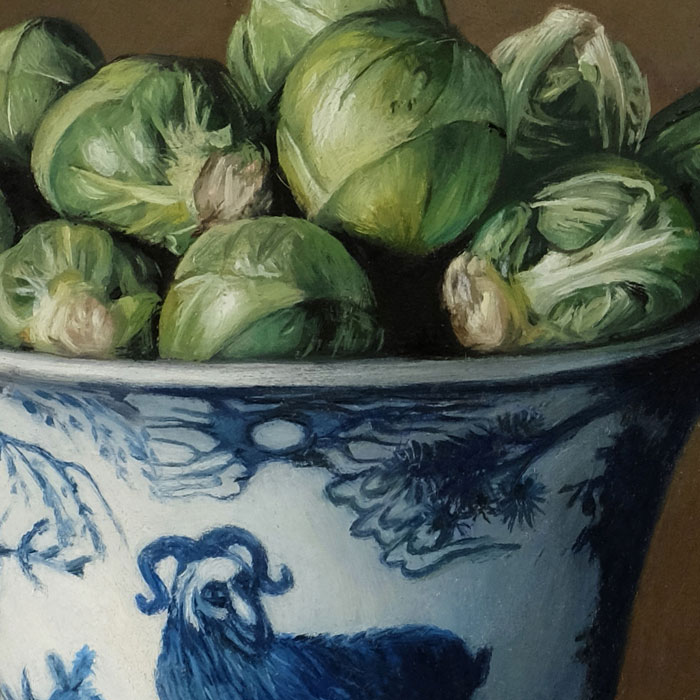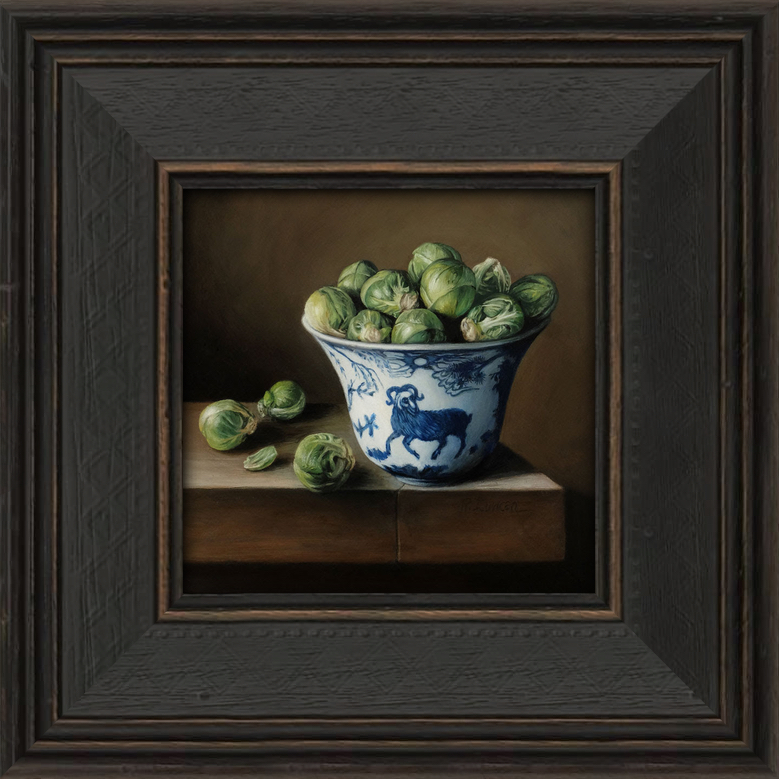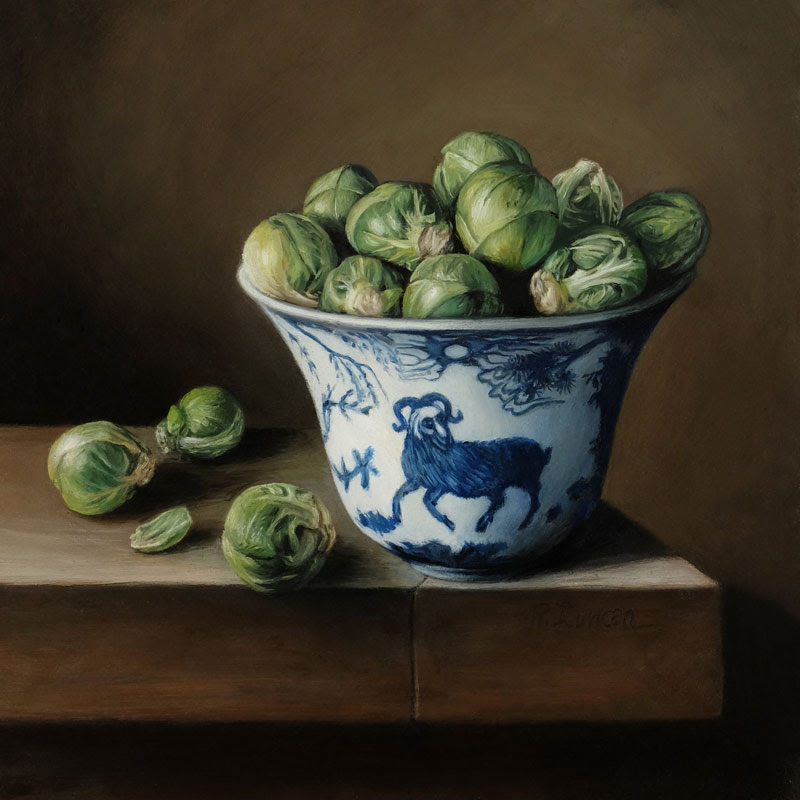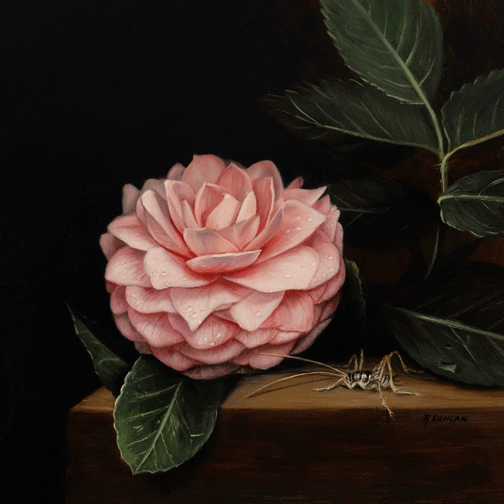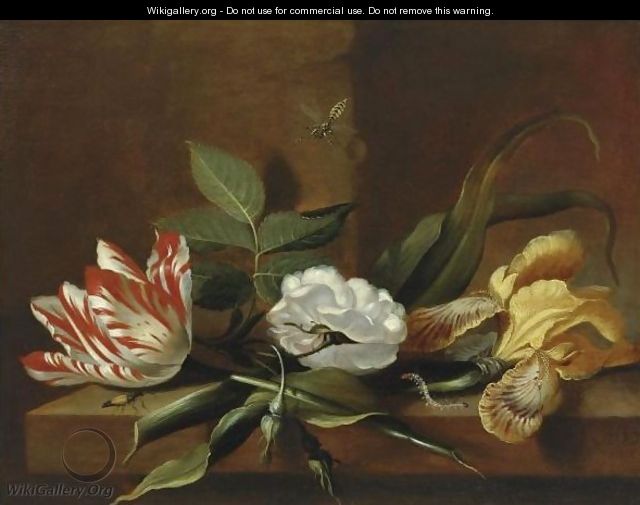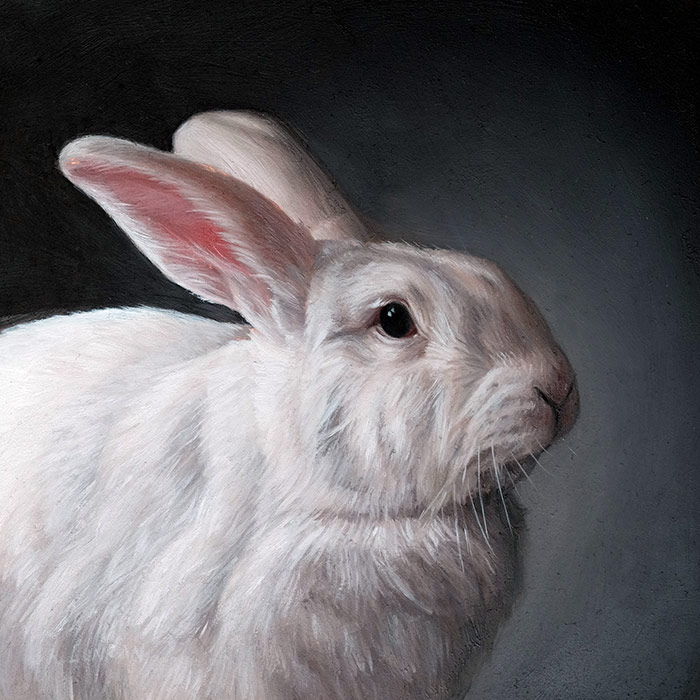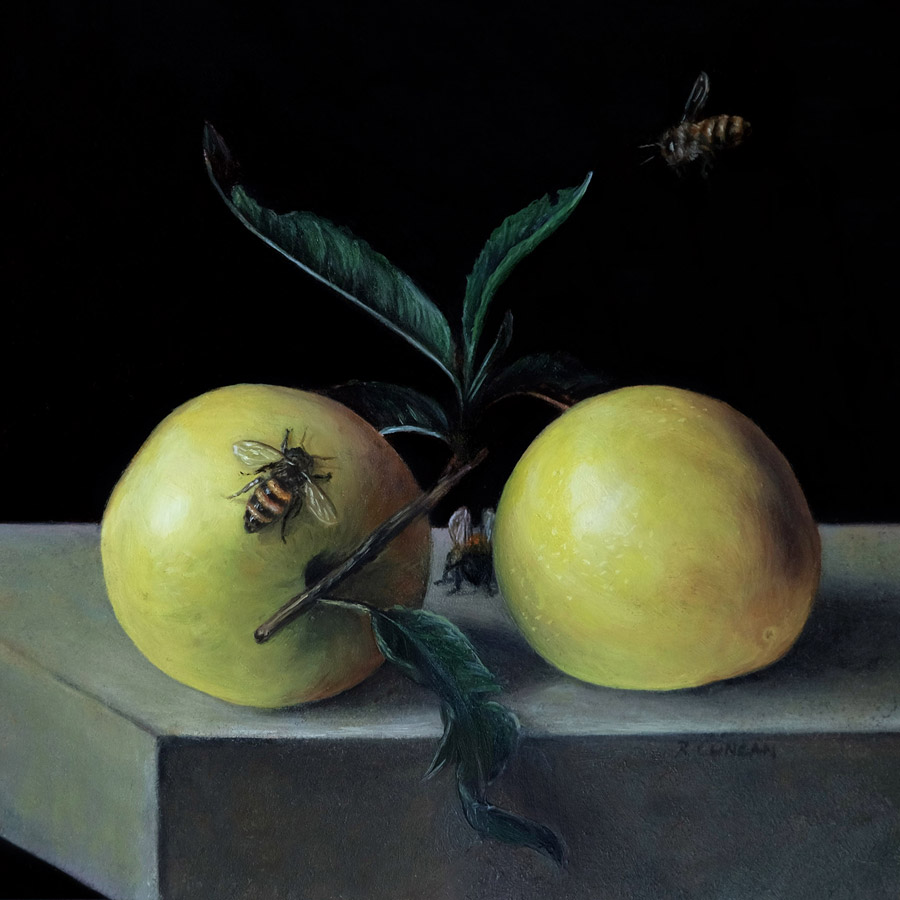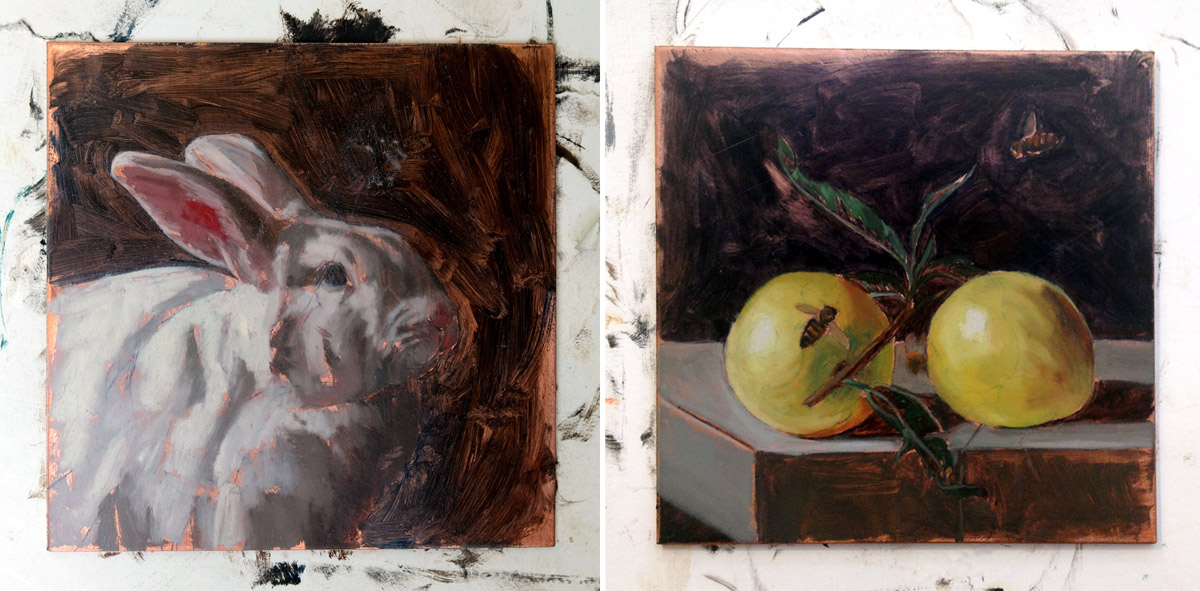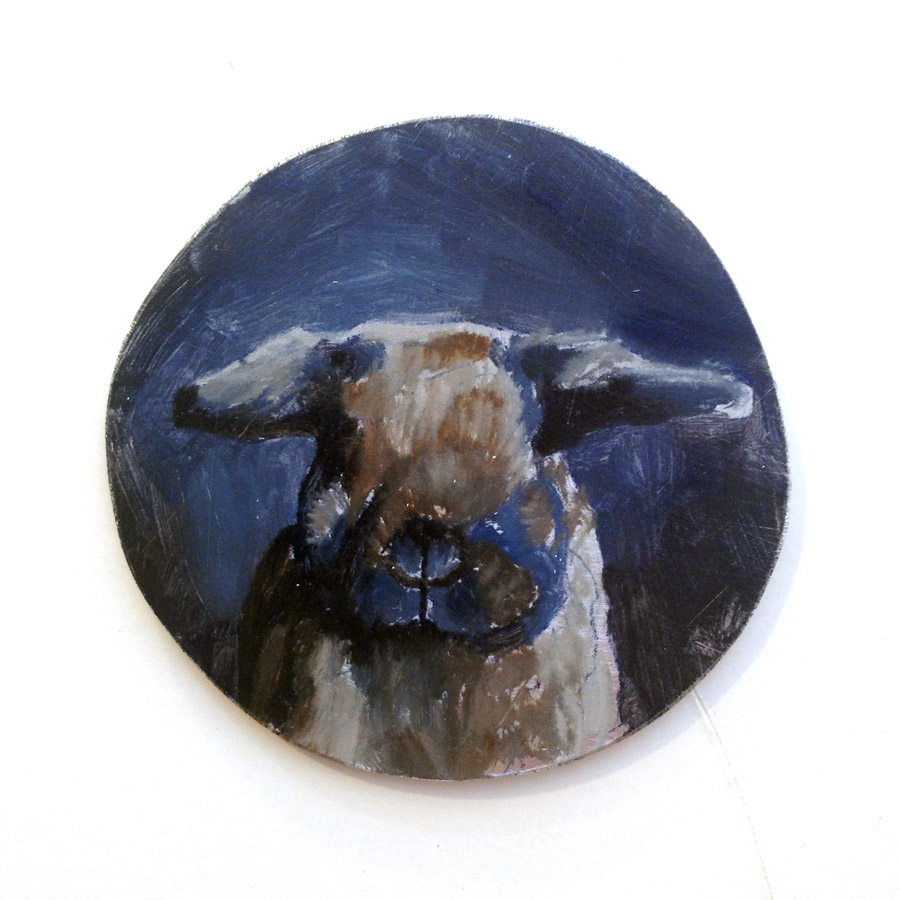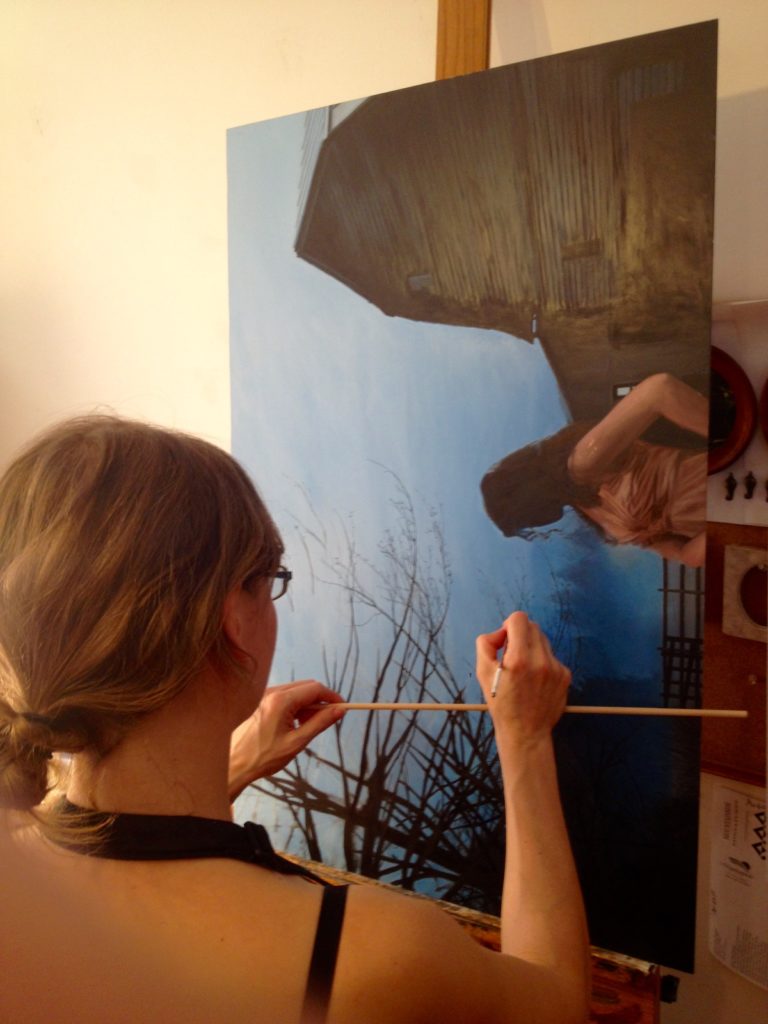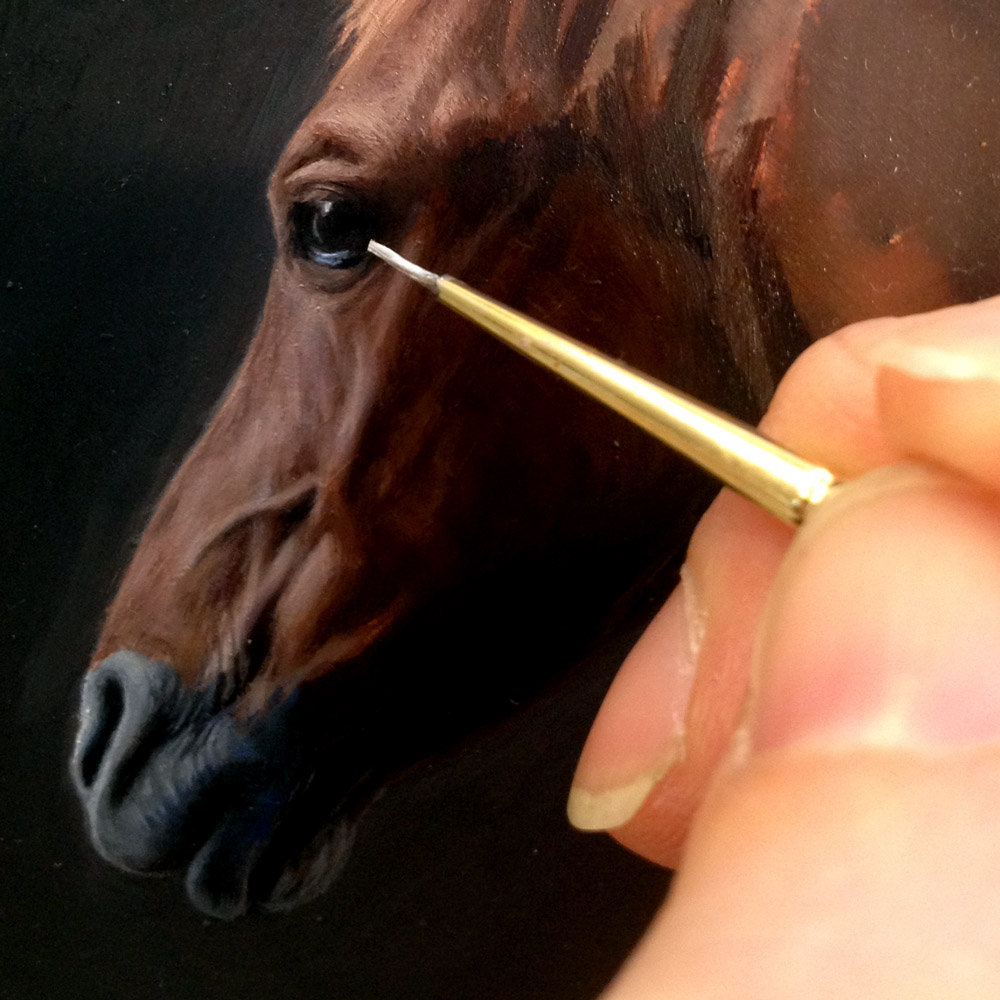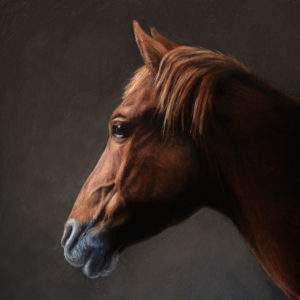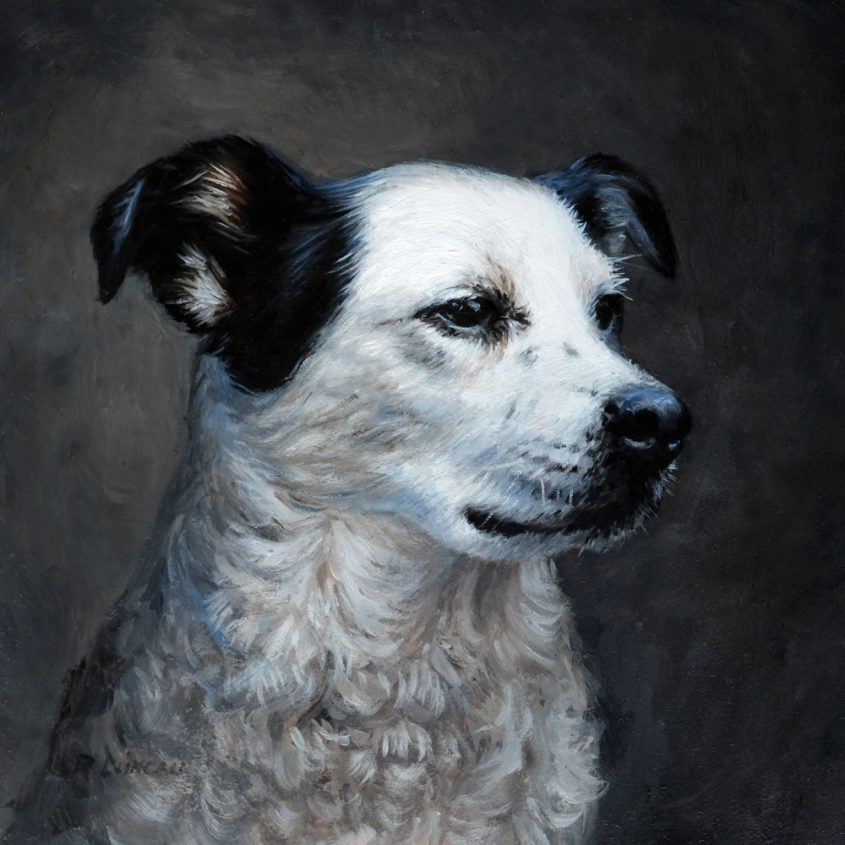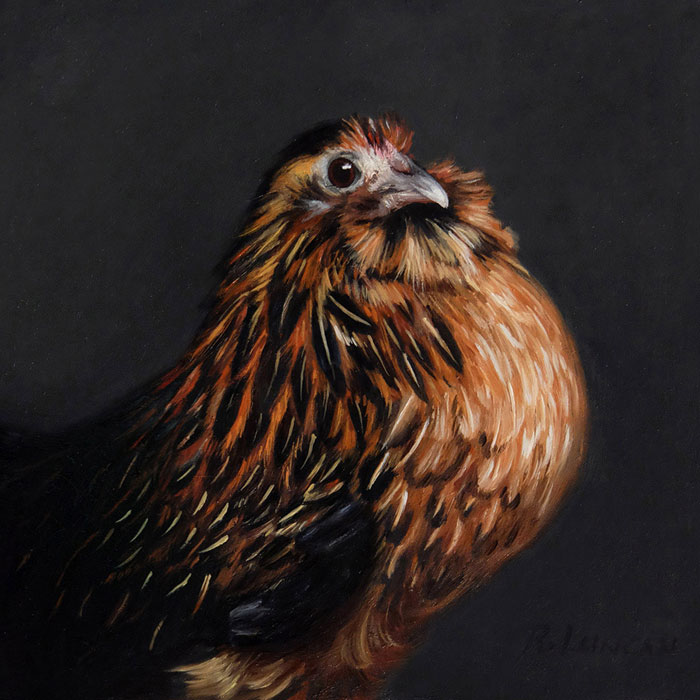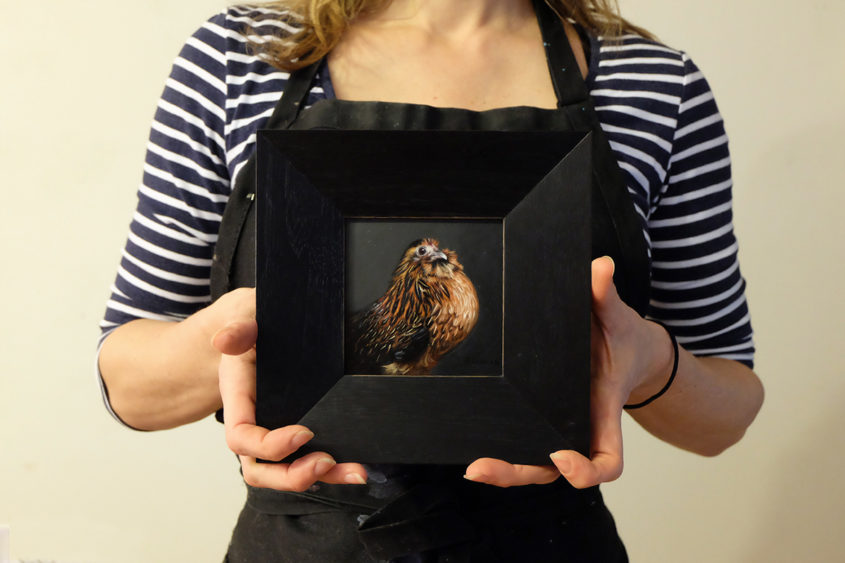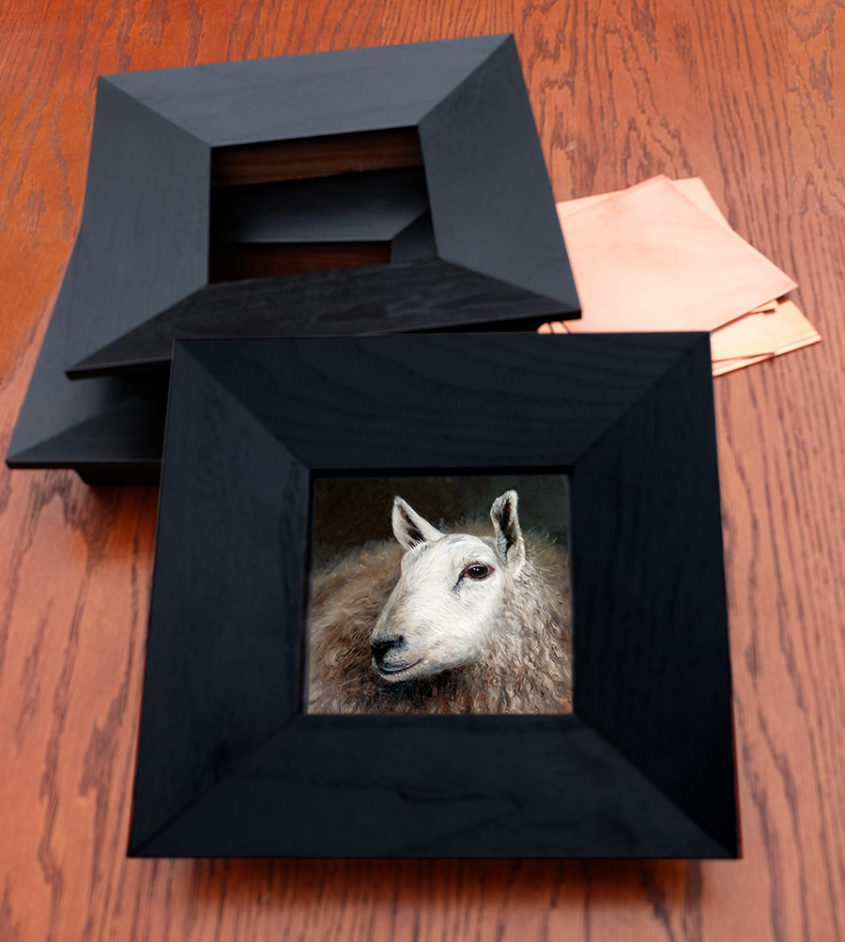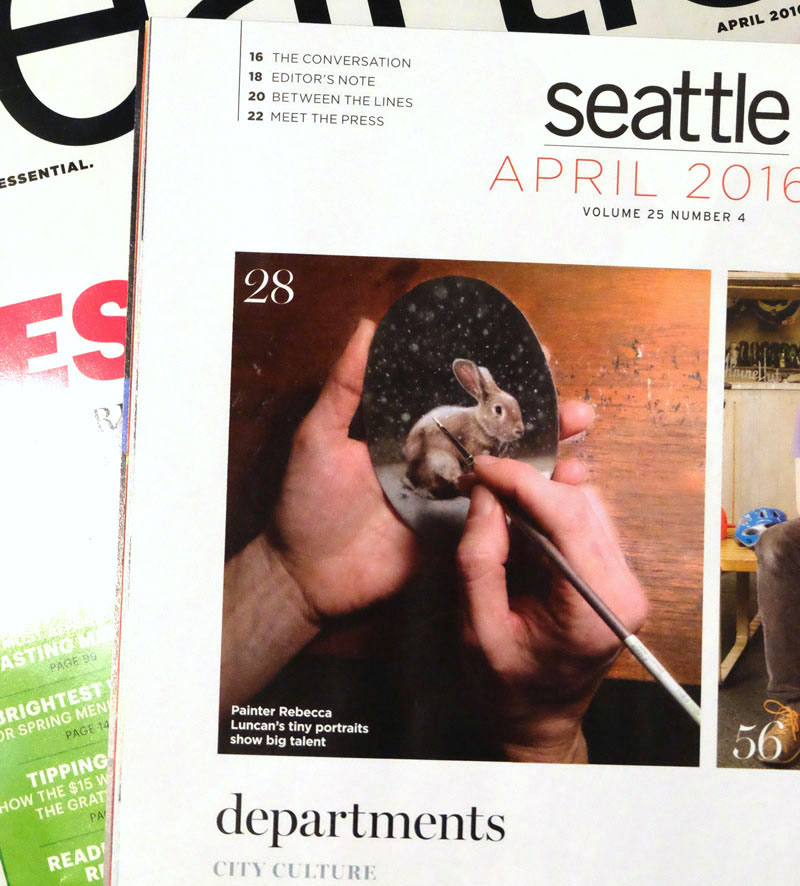I’ve always loved Art Museums and have been working at the Seattle Art Museum for 13 years. It seems as though I’ve gotten to install paintings by just about everyone that has graced an art history book with my own two hands. It’s been inspiring to see the works up close, but it’s also wonderful to work with so many other artists who help contribute insight into the work at the museum and my own artwork. It was actually a SAM exhibition that rekindled my love of Dutch still-life paintings, “European Masters: The Treasures of Seattle”.
My first year at the museum was spent just making mounts for the porcelain room. Because of my connection to SAM, including porcelains in this series feels natural. I’ve chosen to include this exquisite 16th century Jingdezhen-ware porcelain bowl from SAM’s collection. It’s perfect for the month of February. It features “three goats (yang) and the Three Friends of the Cold Season (pine, blossoming plum, and bamboo) all carrying a message of renewal appropriate to the beginning of the new year. Winter ends and spring arrives; yin is on the wane and yang is on the rise, heralding the rebirth of nature.”
I chose to make this month’s still life painting of Brussels sprouts for two reasons. I love that the vegetable is named for a city in the region where these paintings reached their maturity, and they are one of the only vegetables growing in my yard right now (the rabbits love them!).
See more Monthly Miniature paintings from this and past series in the Monthly Miniature gallery.
